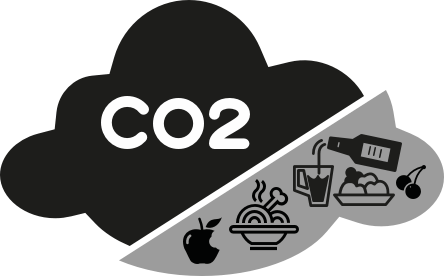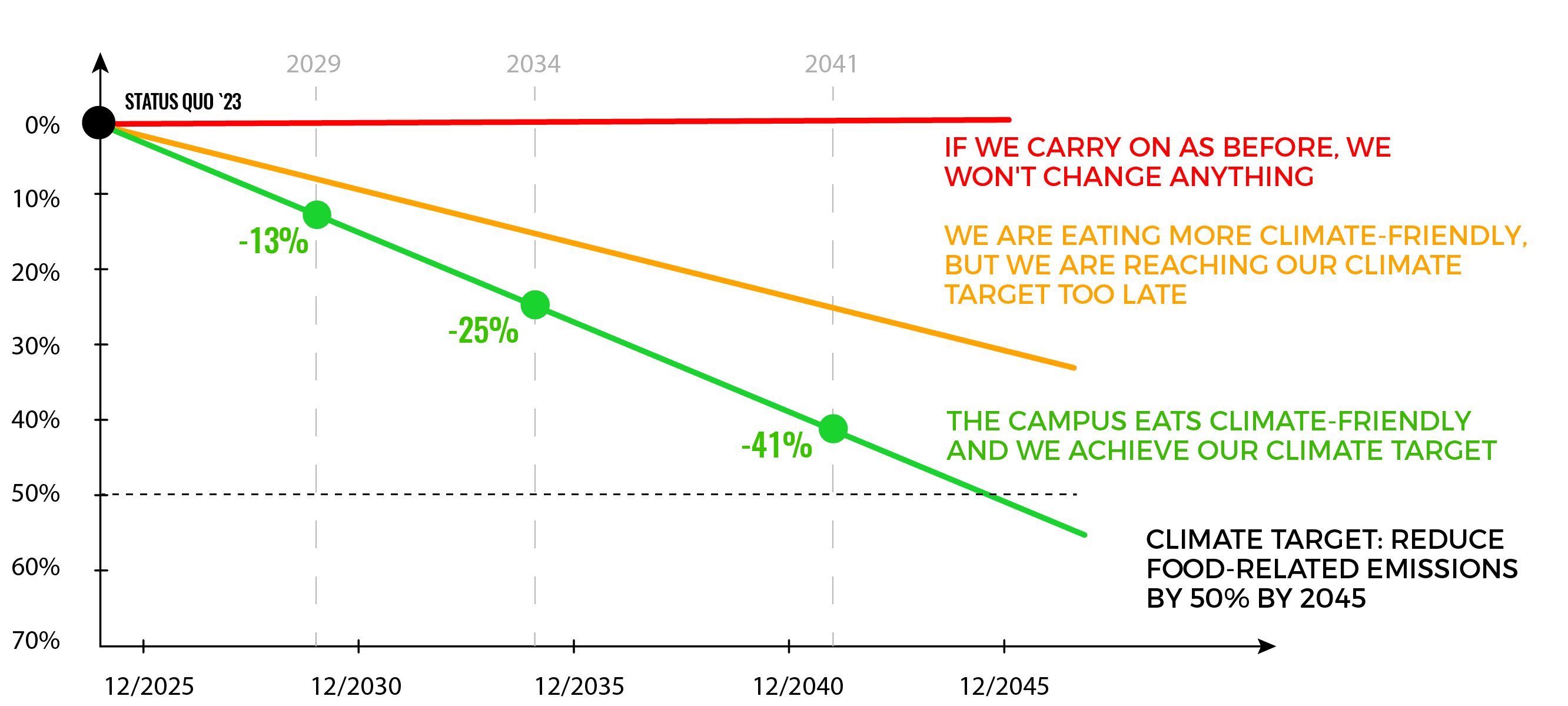From now on you will find a small cloud symbol next to (almost) all dishes at the PAPA and CANTEEN. This “climate score” provides you with transparent information about the greenhouse gas emissions caused by your choice of lunch.
Over 30% of global greenhouse gas emissions are linked to the food supply.
We at PACE want to change this together with you and reduce our CO2 footprint by 50%.
You would have to eat “green” more often and we would have to offer less “orange” and “red”. TOGETHER FOR MORE CLIMATE PROTECTION
Green means climate-friendly! It has a better CO2 footprint than the average meal. If you choose this dish three times a week, it would reduce our CO2 footprint as much as 7.6 million fewer cars on German roads.
Orange is a limit value. Although some of these dishes are better than the average, they do not improve your carbon footprint.
The dishes marked in red are worse than twice to four times than the average. We would like to see lower demand for these dishes and/or succeed in producing them in a more climate-friendly way in future.
That is enormous! By adopting more climate-friendly eating habits, we can therefore make a significant contribution to overcoming the major problems of global warming and the resource crisis while also living healthier.


We at PACE want to make our contribution. Das, was wir ändern können, gehen wir an. With your help, we would like to reduce CO2 emissions in our restaurants immediately.
We all want to raise awareness of this issue. From now on, you can reduce your foodprint by choosing a Green Cloud dish.
On the other hand, we will also work on optimizing our menu planning and preparation to make it more climate-friendly.

The calculations are based on the full life cycle of the entire product composition. These include transportation, seasonality, packaging and other important factors. In this way, we ensure full transparency and comparability for the smart choice of consumers.
 less than 1,947g CO2/DFU
less than 1,947g CO2/DFU
at least 50% better than the average
 less than 3,894g CO2/DFU
less than 3,894g CO2/DFU
better than the average
 more than 3,894g CO2/DFU
more than 3,894g CO2/DFU
worse than the average
The Eaternity Climate Score gives you transparency about the greenhouse gas emissions of your lunch choices.
Meals are awarded ‘climate-friendly’ status if they are better than most meals served (compared to over 75,000 meals in our database). A climate-friendly meal has at least 50% LESS CO₂ emissions than an average meal. The average meal is defined as 1/3 of the daily requirement.
The recipes for our dishes are provided digitally. A tool generates a shopping list of all the necessary ingredients from our weekly meal planning and these are then ordered. The delivery bills for the goods are registered digitally, including information such as origin or e.g. organic quality.
We create a unit (DFU = Daily Food Unit) that corresponds to a person’s daily requirement in order to normalize all foods. This DFU is independent of our Climate Score, so it does not include any of the metrics that indicate healthy foods (such as fiber, high trans fat, low polyunsaturated fat, sodium, etc.). It serves as an appropriate normalization function.
We consider the following nutrients according to their recommended daily amount:
g protein/ 50 g
g fat/ 66 g
kJ (the rest) / 6000 kJ
g water / 2500 g
g (weight – “minus” water) / 600 g
and the sum of all divided by 5
Example: 100 g whole grain cereals contain 10 g protein, 7 g fat, 1434 kJ, 16 g water – 84 g dry weight. The DFU is also: (10/50 + 7/66 + (1434 – 17 x 10 – 37 x 7)/6000 + 16/2500 + 84/600) / 5 = 0.124
With a CO₂ value of 85g CO₂ / 100g, we now have 685g CO₂/DFU.